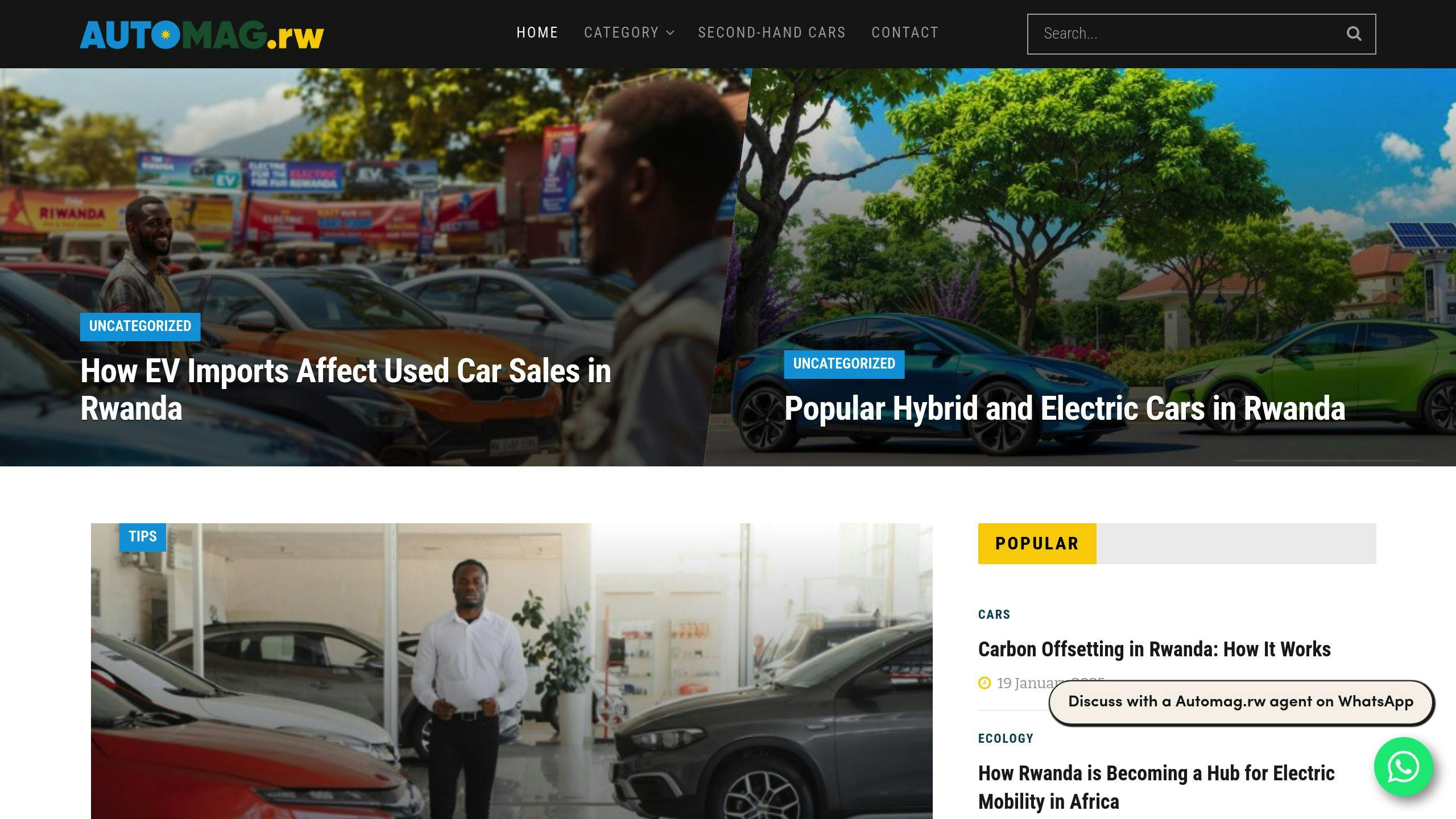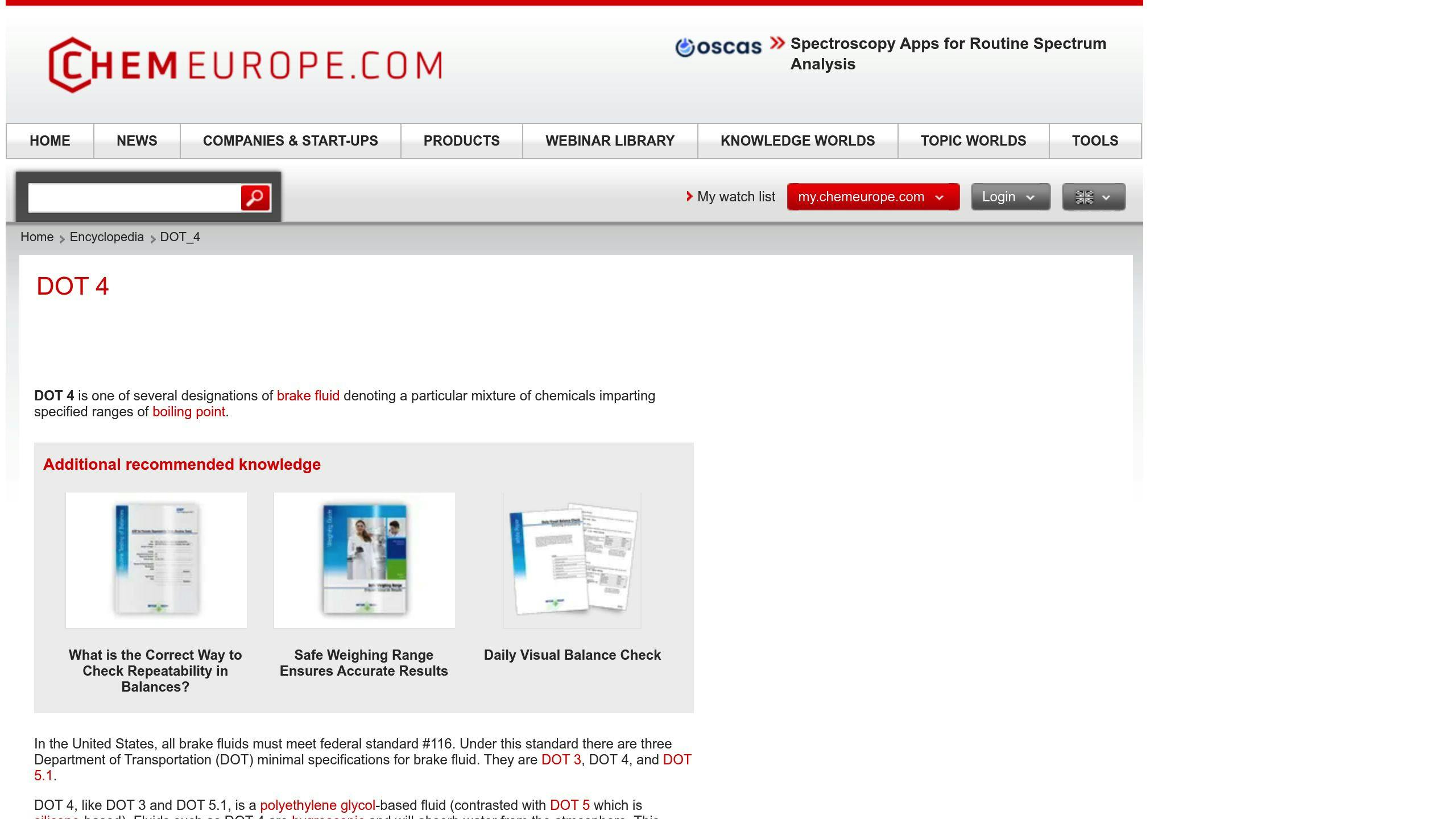Brake fluid maintenance is crucial for your safety. Here’s a quick guide to ensure your brakes stay in top condition:
- Why It Matters: Low or contaminated brake fluid can lead to brake failure, longer stopping distances, and expensive repairs.
- How Often to Check: Monthly for normal driving, more frequently in harsh conditions.
- What to Look For: Fluid levels between "min" and "max" markers, clear or light amber color (dark or cloudy fluid needs replacement).
- Steps to Add Fluid: Use the correct type (e.g., DOT 3, DOT 4), clean the reservoir, and pour carefully to avoid contamination.
Pro Tip: Replace brake fluid every two years or as recommended by your vehicle’s manual to prevent moisture buildup and corrosion.
Keep reading for detailed steps, safety tips, and troubleshooting advice.
How to Check & Top Off Brake Fluid
Preparation for Checking Brake Fluid Levels
Getting ready properly helps you avoid risks and ensures accurate results during the inspection.
Tools and Materials Needed
Here’s what you’ll need:
- Clean cloth
- Protective gloves
- Flashlight
- Vehicle manual
Locating the Brake Fluid Reservoir
The brake fluid reservoir is typically a clear container with a black lid, located near the brake master cylinder [5]. Check your vehicle manual for exact details specific to your car.
Safety Measures Before Inspection
Taking the right precautions keeps you safe and ensures accurate results [6]. Before starting:
- Park the car on a flat, stable surface.
- Turn off the engine and allow it to cool completely.
- Wipe down the reservoir cap with a clean cloth to prevent dirt from getting inside.
- Wear gloves and eye protection to avoid contact with the corrosive brake fluid.
If your vehicle has ABS, check the manual for any special instructions, as the process may differ [6].
Once you’ve completed these steps, you’re ready to check the brake fluid levels.
Steps to Check Brake Fluid Levels
Understanding Fluid Level Indicators
The brake fluid reservoir usually has clear walls marked with "minimum" and "maximum" levels. In good lighting, check that the fluid level falls between these markers. If it’s close to the minimum, add more fluid. If it’s above the maximum, carefully remove some to prevent issues in the system.
Evaluating Brake Fluid Quality
The condition of your brake fluid says a lot about the health of your brake system. Here’s a quick guide:
| Fluid Color | Condition | Action Needed |
|---|---|---|
| Clear to Light Amber | Good | Keep monitoring regularly |
| Yellow to Amber | Fair | Schedule maintenance soon |
| Dark Brown or Black | Poor | Address immediately |
| Cloudy or Opaque | Contaminated | Flush the system right away |
What to check:
- Color and Clarity: Fresh brake fluid is clear or slightly yellow.
- Moisture Levels: Should be under two percent for proper function.
- Signs of Contamination: Look out for a gritty feel or metallic odor.
If testing shows voltage readings above 0.30 volts or copper levels over 200 ppm, it’s time for a fluid flush.
"Dark or black brake fluid may indicate the need for a flush, though some manufacturers don’t require it."
Keeping an eye on these factors ensures your brake system stays in good shape. If you notice low fluid levels or poor quality, it’s time to add or replace the brake fluid safely.
sbb-itb-7bc66b5
Adding Brake Fluid Safely
Selecting the Right Brake Fluid
Different vehicles require specific types of brake fluid, and using the wrong one can hurt your braking system.
| Brake Fluid Type | Boiling Point | Ideal Use |
|---|---|---|
| DOT 3 | Lower | Everyday passenger cars |
| DOT 4 | Higher | Cars with ABS or performance needs |
| DOT 5.1 | Highest | High-performance or advanced ABS systems |
To find the right fluid for your car, check the owner’s manual or the label on your brake fluid reservoir cap. Never mix brake fluid types – this can damage the system and reduce safety [1][4].
Procedure for Adding Fluid
Adding brake fluid the right way is critical for keeping your brakes working well.
- Preparation: Make sure the reservoir is clean to avoid contamination.
- Inspection: Check the current fluid level before adding more.
- Adding the Fluid: Slowly pour the brake fluid, keeping it between the minimum and maximum marks. Leave a little space at the top [2].
"Even slight contamination can damage master cylinder seals, risking brake failure" [6].
Safety Tips to Remember:
- Always keep the reservoir sealed when not in use, and secure the cap tightly after adding fluid.
- Clean up any spills immediately with a cloth to avoid damage to surrounding components.
If your brake fluid level keeps dropping or you notice leaks, have a professional mechanic inspect your car right away. Routine maintenance, including replacing brake fluid every two years, helps maintain safe and effective braking [1].
If topping off the fluid doesn’t solve the problem or levels drop again, further investigation is necessary.
Addressing Brake Fluid Problems
Reasons for Low Brake Fluid
Low brake fluid levels usually point to underlying problems that need immediate attention. Here are some common causes:
- Brake System Leaks: Look out for light yellow or brown fluid puddles under your car. These could indicate leaks in the brake lines, calipers, wheel cylinders, or piston seals [1]. This is especially common in areas with high humidity or rough road conditions, which can speed up brake line corrosion.
- Worn Brake Pads: As brake pads wear down, the calipers extend further, causing fluid levels to drop gradually. While this is normal, it means it’s time to replace the pads [3].
- Moisture Contamination: Over time, brake fluid absorbs moisture, which lowers its boiling point and can affect braking performance [7].
Knowing what causes low brake fluid is important, but spotting the warning signs early can prevent bigger problems.
Signs of Brake System Issues
| Warning Sign | What It Means | Required Action |
|---|---|---|
| Spongy Pedal | Air or moisture in the system is likely present. | Get a professional inspection. |
| ABS Light On | Could mean low fluid or a system malfunction. | Check fluid levels immediately. |
| Burning Smell | Overheating caused by low fluid. | Stop driving and call a mechanic. |
| Grinding Noise | Worn parts or contaminated fluid. | Schedule a brake inspection. |
When to Visit a Mechanic
Brake issues should be addressed right away to avoid safety hazards. Seek professional help if you notice:
- The ABS light comes on or fluid levels drop repeatedly, even after topping up.
- The brake pedal goes all the way to the floor.
- Strange noises during braking.
- Reduced stopping power.
- Visible fluid leaks.
Routine maintenance, like changing brake fluid every 30,000 miles or two years (based on manufacturer recommendations), can help prevent many of these problems [7]. The cost for a brake fluid change typically ranges from $89 to $139 [2]. Regular checks and timely servicing not only help you avoid expensive repairs but also keep you safe on the road.
Conclusion and Main Points
Regular Checks Are Crucial
Even if you don’t drive often, brake fluid can still absorb moisture over time. Skipping regular checks can lead to serious issues, such as:
- Brake system failure, putting safety at risk
- Longer stopping distances
- Expensive repairs caused by corrosion in the system
Keeping Your Brakes in Top Shape
Stick to these maintenance steps to keep your brakes working properly [3]:
| Maintenance Task | How Often | Why It Matters |
|---|---|---|
| Visual Inspection | Monthly | Monitor fluid color and level |
| Professional Testing | Every 6 months | Check for moisture buildup |
| Complete Fluid Change | Every 2 years | Prevent damage to the system |
Always choose brake fluid that matches your car’s specifications. A professional brake fluid change typically costs between $89 and $139 [2] – a small price compared to the cost of repairs or accidents caused by neglect.
Following these steps will help ensure your brake system stays dependable and safe, reducing the likelihood of expensive repairs or dangerous situations.
Learn More on AutoMag.RW

Looking for more vehicle-specific advice? AutoMag.RW offers expert tips on brake maintenance, along with connections to trusted mechanics and resources. The platform regularly updates its content with maintenance guides for all types of vehicles, including electric models.
"Regular brake fluid checks and changes are fundamental to vehicle safety. A properly maintained brake system can mean the difference between a close call and a collision." [1]
While you can handle some maintenance tasks yourself, having a professional inspect your brake system is essential for ensuring everything is in top shape. Certified mechanics can evaluate your brake fluid and recommend the best maintenance schedule based on your car and driving habits [3].
FAQs
What vehicles use DOT 4 brake fluid?

DOT 4 brake fluid is commonly found in vehicles with ABS or high-performance braking systems. Some examples include:
- Cars with anti-lock braking systems (ABS)
- Performance and sports cars
- Many European models with advanced braking technology
- Vehicles that require fluid with a higher boiling point
Important: Avoid mixing different types of brake fluid – it can damage your braking system and reduce performance. Always check your vehicle manual to ensure you’re using the correct DOT 4 fluid.
If you’re unsure about your car’s brake fluid requirements, consult AutoMag.RW’s certified mechanics for model-specific advice. Choosing the right brake fluid is key to keeping your brakes safe and efficient.
Related Blog Posts
- How Rwanda’s Hills Affect EV Range
- 10 Tips for Long Drives in Rwanda
- Top 7 Tips for Choosing Between New and Used Cars
- 8 Common Car Buying Scams in Rwanda





